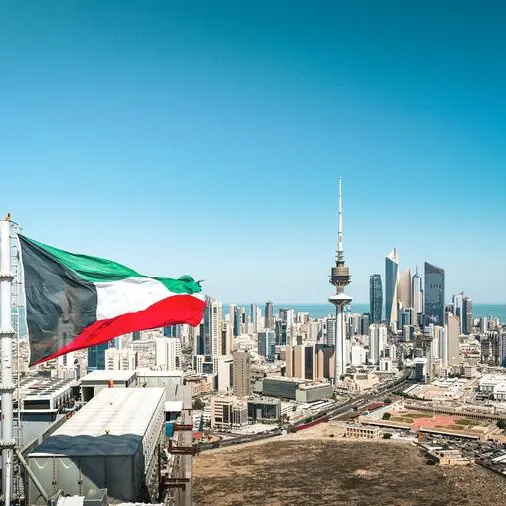PHOTO
Online Shopping Woman used Computer laptop searching Shop on E-commerce Website and using Smartphone to payment on Digital Payment online gateway by Credit card. Getty Images
E-commerce is the buying and selling of goods and services over the Internet. E-commerce operates through digital platforms, allowing enterprises and consumers to engage without physical interaction. E-commerce platforms are available 24/7, allowing businesses to reach a global audience. E-commerce is experiencing growth globally and is estimated to reach $8.8 trillion by 2024. It is projected to reach $18.81 trillion by 2029. The increasing use of mobiles as a preferred channel for online sales, emerging technologies enhancing the online shopping experience, and the increase in eco-friendly packing and sustainable practices as consumer preferences contribute to the rise in global e-commerce transactions.
North America is the largest e-commerce market, while Asia Pacific shows significant growth. The Middle East is an emerging e-commerce market that accounts for 4% of the total retail revenue, lower than the 15% seen in more developed regions. E-commerce in the Gulf region is expected to grow nearly 11% annually from 2023 to 2027, reaching $49.78 billion by 2027.
Oman, in general, prefers a more personalised shopping experience. This unique consumer preference is critical to Oman's e-commerce market dynamics. Consumers must feel and try the products before purchasing them, especially clothes and personal care products. Despite the high internet penetration rates of over 80%, only 8% of the population in Oman engages in e-commerce, primarily through mobile phones.
E-commerce accounts for 1% of the total retail sales in Oman. However, e-commerce is growing. In 2023, the size of the Oman e-commerce market was estimated at $0.57 billion, indicating a significant growth potential. The e-commerce market serves the B2C and B2B sectors and spans electronics, fashion, groceries, and home appliances, attracting Oman e-commerce companies.
The market size is expected to reach $0.66 billion in 2024 and grow at a CAGR of 13.54% to reach $1.24 billion by 2029, further underlining the promising investment opportunities. Electronics accounts for the lion's share at 23%, followed by fashion at 18%, homeware at 12%, personal care products at 9%, grocery at 8%, and DIY at 8%.
The major players in Oman’s e-commerce landscape are Amazon, eBay, AliExpress, Namshi, Talabat, Royal Oman Police, InvestEasy, Bayan Customs, local grocery delivery websites and apps, Oman Post (Matjar), and Asyad Express. Cross-border e-commerce plays a significant role in Oman’s e-commerce market.
These players contribute significantly to the growth and development of the e-commerce market in Oman. Cross-border e-commerce is seen in airlines, hotels, commercial infrastructure, and services. The Oman government’s Vision 2024 and the National Digital Economy Program include initiatives to promote cross-border e-commerce. Oman’s strategic location gives it the potential to become a regional e-commerce center.
The e-commerce market has experienced significant growth over the years. Various factors have contributed to the development, like Covid-19, which has influenced the shift to online purchases, increased usage of the internet, the growing young Omani population, and the rise in smartphone ownership.
The government of Oman has played a significant role in promoting e-commerce, particularly with the national e-commerce plan launched in 2020 and the implementation of new e-commerce regulations under ministerial decision No. 499/2023 in 2024. As of April 2024, 3,316 e-commerce licenses have been granted, underscoring the government's commitment to fostering a conducive environment for e-commerce growth.
The e-commerce plan focuses on improving logistics services, building national skills, and promoting a conducive environment for e-commerce growth, providing reassurance about the sector's support and potential for further development.
The e-commerce landscape in Oman is in its early stages, but it holds significant potential for growth. Major growth and regulatory efforts were initiated from 2022 to 2024, indicating that this sector's formal recognition has occurred with substantial developments.
With a population exceeding 4.6 million and mobile subscriptions surpassing a penetration rate of 150%, increasing disposable income, and a growing urban population, the Oman e-commerce landscape is poised to become a burgeoning market. While Omanis generally prefer to buy in person, online shopping is gradually gaining traction, leading to the growth and development of the e-commerce landscape in Oman.
Despite challenges like restricted payment methods and logistical complexities, governmental initiatives and a younger demographic drive digital transformation. This promising outlook highlights the potential for significant growth in the Oman e-commerce market, fostering optimism about the future of digital commerce in the region.
2022 © All right reserved for Oman Establishment for Press, Publication and Advertising (OEPPA) Provided by SyndiGate Media Inc. (Syndigate.info).





















